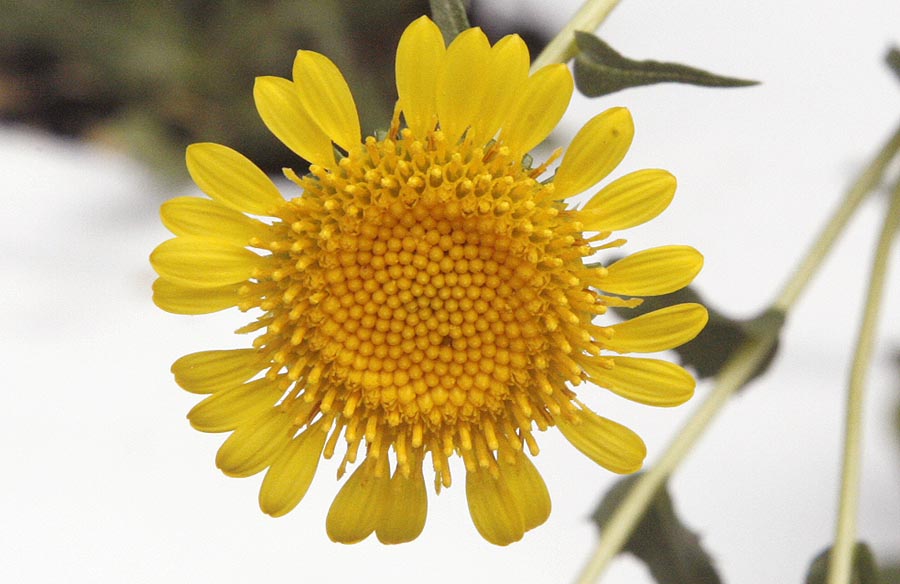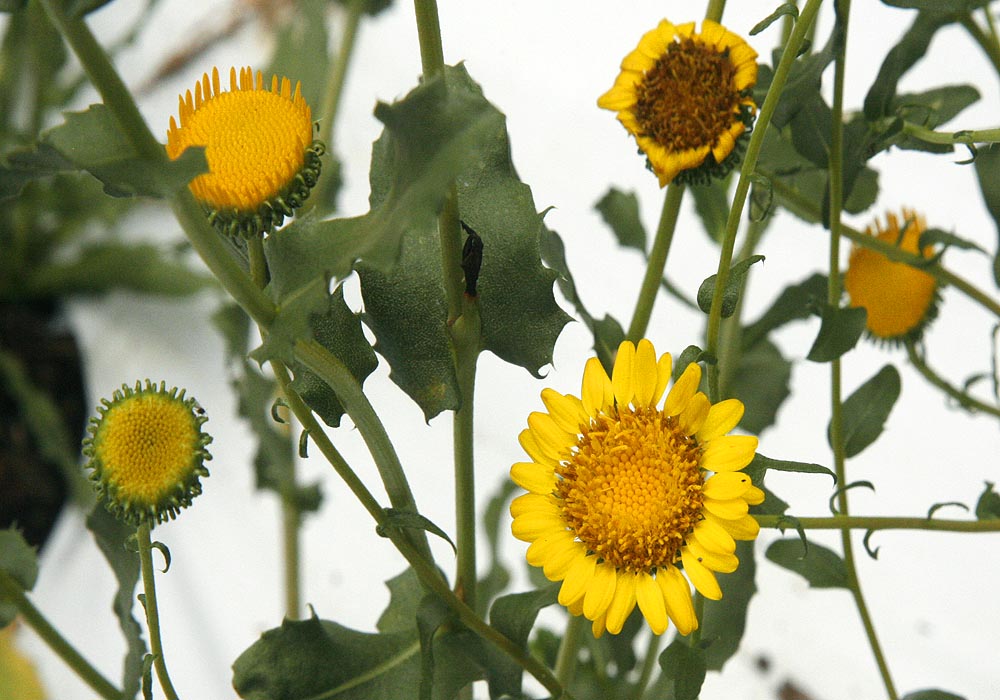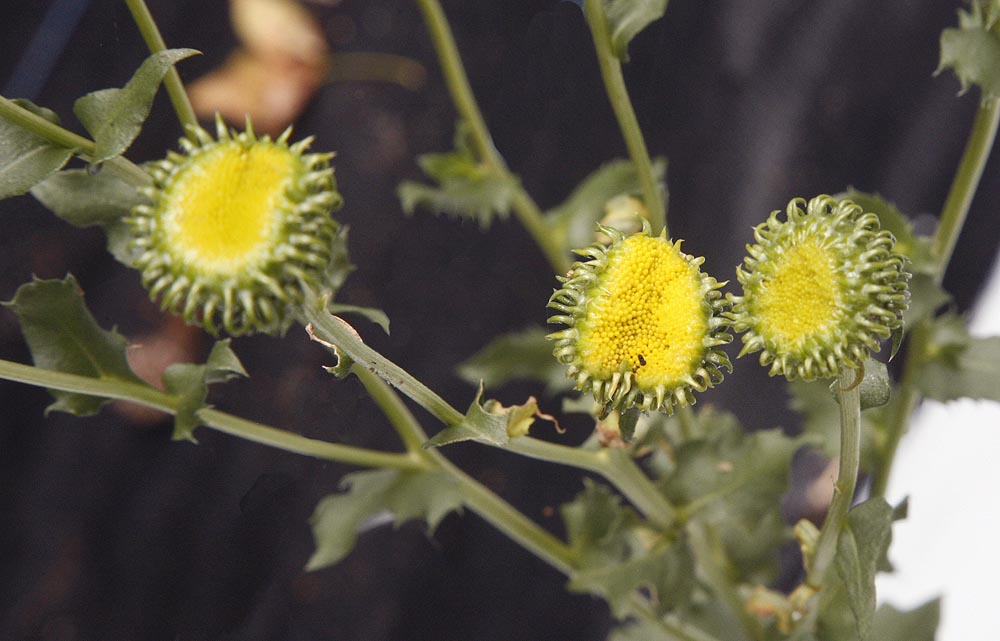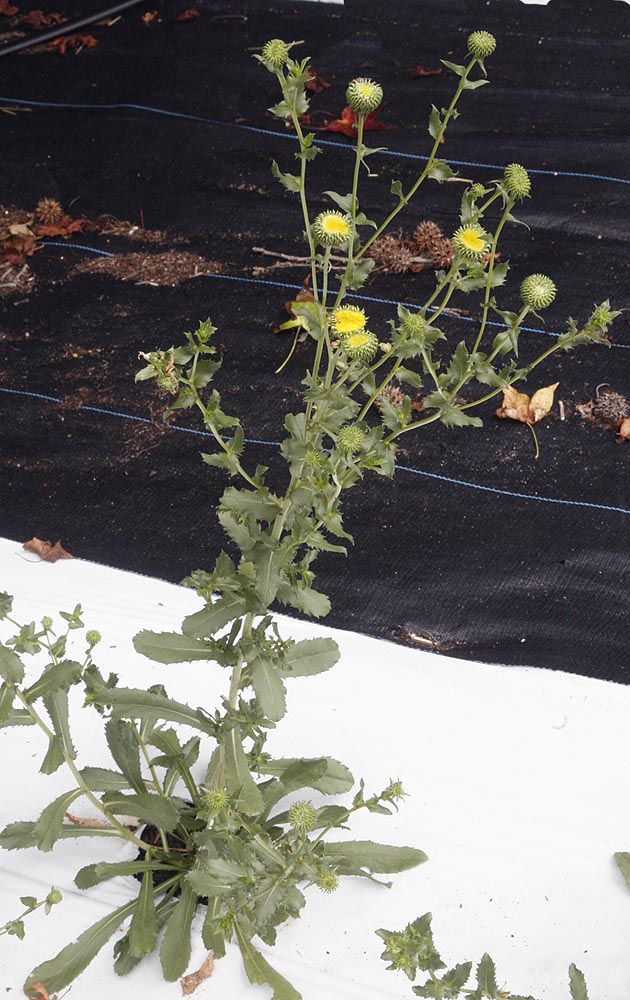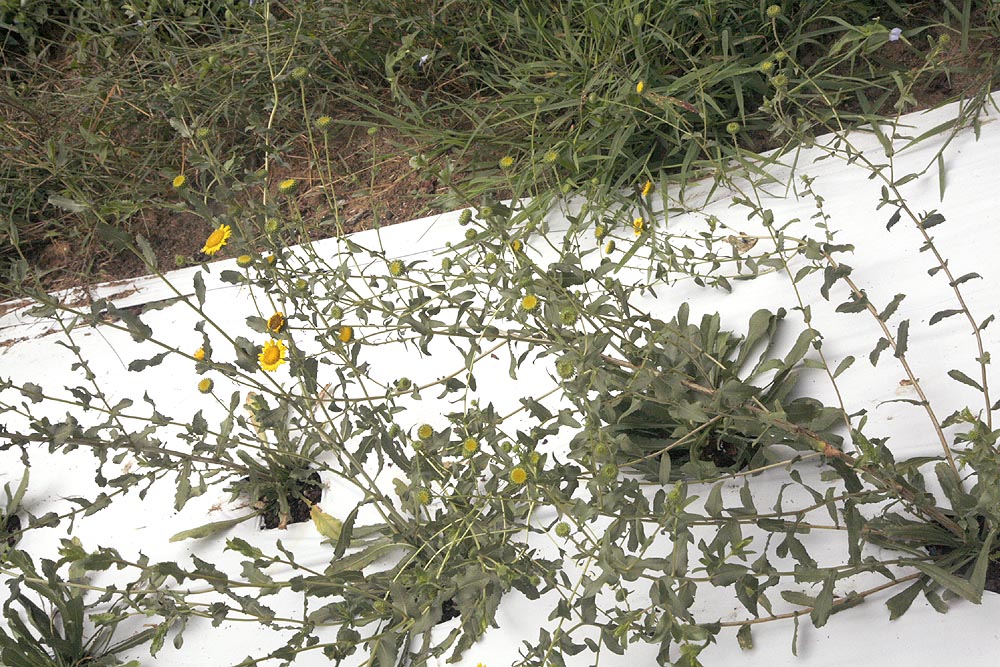For those in semi arid areas of the western United States this is a wonderful perennial plant that can remain in a garden for many years with little maintenance and water use. For the rest of the country it's mostly grown as an annual to enjoy the lovely yellow flowers and harvest the sticky gummy leaves and buds for medicine. Gumweed likes poor soil and full sun. It does not do as well in areas that have a great deal of rainfall during the summer months and certainly struggles in the hot humid south. For those with reasonable rain and hot weather it can be a delight for the garden as an annual. If your zone is warmer than 6b it may remain as a perennial but above that it does not tolerate the winter. It's easy to grow however and needs little maintenance, producing lovely bright yellow daisy like flowers from late spring until late fall if plants have been started indoors to give them a head start. Due to the sticky gummy leather like leaves wildlife don't eat it but pollinators love the flowers especially bees and butterflies.
While some sources state it's hardy to zone 7 this is dubious and more likely to be 8b although its may be possible to sustain it in 7b with heavy mulching and mild winters. In warmer areas 9 and more it will sustain as a woody sub shrub while all other areas it acts more like a herbaceous perennial dying back every winter. While some sources state it can tolerate down to between 14-23F (-5 and -10°C) we have not found that to be true. Plants in zone 7a do not survive the winter outside and it rarely gets as cold as 14F.
Growing Great Valley Gumweed (Grindelia camporum) from Seed.
Easily grown from seed; only very lightly cover seed. Germination takes 2-3 weeks at around 50-60F (10-15.5 C); warmer temperatures often reduce germination rate unless pre treated at around 45 F for at least 8 days. Keep temperatures under 70. Sow in small pots or plug trays for best results. Transplant when large enough to handle and grow on in small 3 inch (7.5 cm) pots until large enough to transplant.
In zones 8b and warmer can be direct seeded in early spring. This method is not recommended in cooler zones as plants will need to be grown as annuals. For more information on growing from seed see our General Growing Instructions.
In 7b-8a plants should overwinter outside but mulching is recommended to help through any cold spells.
In 7a and above this plant is grown as an annual unless it is grown in pots and brought inside during the winter months.
Light. In all cases gumweed requires full sun for good growth. Plants will become straggly otherwise.
Soil. Prefers a light well drained soil. Does very well on poor soils with few nutrients, sandy soils are preferred but will grow on most kinds but not waterlogged. Do not add organic material or enrich soil. It is very salt tolerant so is good for road edges and shore locations.
Water. In its native habitat gumweed tends to grow in ditches and bordering wetlands so it does require moist soil for best results. However these areas also tend to lack summer rains so it's used to drying out during those months so it becomes fairly drought tolerant and some sources even suggest that summer watering can reduce the life span of the perennial. If growing as an annual this should not be an issue but for the most part extra water should not be required during the summer months unless there is a prolonged drought. When this occurs gumweed tends to defoliate and wait for rains to return, adding a little extra water at this time will sustain plants especially if growing as an annual.
If started indoors early enough plants will grow to a reasonable size and flower in the first year from seed. They will not reach the size of a perennial plant as some other summer only grown perennials do but it is sufficient to enjoy the flowers and harvest if desired. To obtain larger plants in cooler zones growing them in pots and bringing them into an unheated but attached garage or a greenhouse in the winter months is required.
Gumweeds do well as pot plants and will increase in size every year. During the winter months keep the soil moist but not wet. If plants die down to the ground they can be stored away from windows and light. If leaves remain try placing them near a window if possible. Bring pots out again after danger of frost has passed.
Externally the leaves and flower heads are boiled to make a strong tea that is used to treat dermatitis caused by poison oak, as well as poison ivy rash, wounds, burns, boils, eczema and sores. Either tea or made into a poultice its mild analgesic properties are said to be beneficial when applied to sore muscles.
The herb is contraindicated for patients with kidney or heart complaints
Both green and yellow dyes are obtained from the flowering heads and pods.
Synonyms: Grindelia robusta, Grindelia procera






